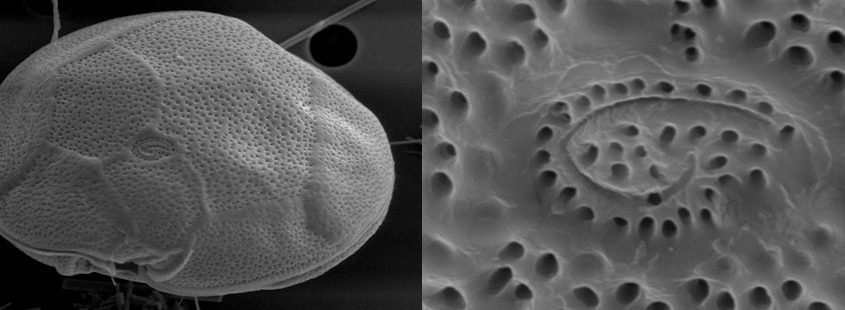ADAPTIVE STRATEGIES OF HARMFUL MICROALGAE: AN INNOVATIVE APPROACH APPLIED TO THE STUDY OF CIGUATERA IN THE CANARY ISLANDS IN THE FACE OF CLIMATE CHANGE
A new approach in the investigation of harmful algal blooms based on the knowledge of the reproductive cell cycle and its adaptive strategies, applied to the study of benthic dinoflagellates of the genus Gambierdiscus, responsible for ciguatera.
Ciguatera is a disease caused by the consumption of fish contaminated by ciguatoxins (CTX), which are transformed and bioaccumulated primarily by carnivorous fish of a high trophic level from toxins produced by benthic dinoflagellates of the genus Gambierdiscus. It is a typically tropical disease but in the last decade it has been spreading to temperate zones. Ciguatera already represents an emerging risk in the Canary Islands and possibly in the Mediterranean as well. The expansion of the geographical distribution of toxic microalgae of tropical and subtropical distribution towards temperate latitudes is an important point of discussion on the issue of the effect of climate change on Harmful Algal Blooms (HABs in its acronym in English), with Spain being key when it comes to its assessment given its geographical location.
In this project we propose a new approach in the investigation of harmful algal blooms based on knowledge of the reproductive cell cycle and its adaptive strategies. This approach and its application to the study of ciguatera in the Canary Islands will not only allow us to know the magnitude of the poisoning problem but also lay the foundations to clarify the strategies through which FAN species adapt to environmental changes, including global warming.
The objective of this proposal is to assess the risk of expansion of the ciguatera problem towards higher latitudes, applying its appearance in the Canary Islands as a case study. To this end, we propose, on the one hand, to define the adaptive strategies of dinoflagellates to environmental changes, focusing on the role of global warming as a modulator of reproductive processes and, on the other hand, to assess the emerging risk of ciguatera in the Canary Islands by studying the populations of Gambierdiscus, its toxins and those detected in fish.



